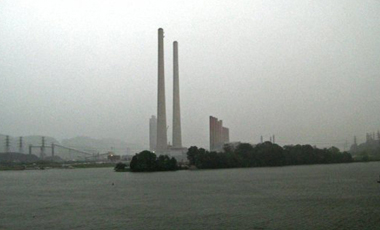Coal Mining & Burning

Kingston, TN coal-fired power plant
Coal burning power plants and coal ash from coal burning plants present the greatest coal related environmental challenge in the Tennessee watershed. Several TVA coal fired power plants exist in the watershed and they all have coal ash disposal sites. These sites must be monitored to detect problems before another disaster occurs, like the Kingston spill (see videos below). Tennessee Riverkeeper is working to develop a monitoring plan for these sites. The U.S. Environmental Protection Agency cites coal-burning power plants as the leading source of mercury air emissions, which end up in the tissue of fish that people eat. Mercury is a potent neurotoxin, and especially dangerous to children and developing fetuses. Coal-burning power plants are also major emitters of air pollutants, including Carbon Dioxide, Sulfur Dioxide, and Nitrogen Oxide.
Kingston Coal Ash Spill
The Kingston, Tennessee spill in December 2008 (in the Tennessee Watershed) illustrates the consequences of failure to adequately address this problem and has brought the problem to the forefront. The spill area itself presents the problem of what to do with massive amounts of coal ash after it has entered the environment. Dredging presents problems as does disposal of dredged material, and no ready answers are available.
The two videos below show the severity of this spill.




